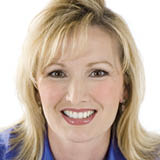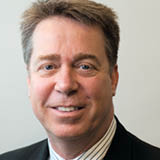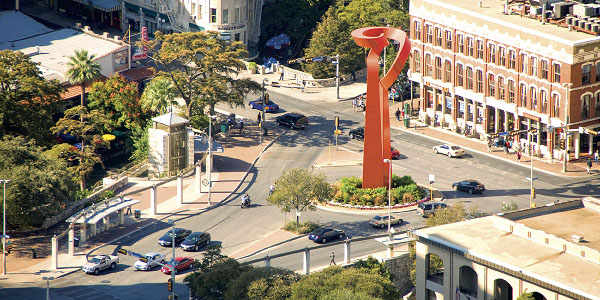Articles
Sponsored

Tech Tools Serve Retailers’ Diverse Needs
Q: What do retailers need to know about working with 3PLs today? A: Retailers are challenging third-party logistics (3PL) providers to supplement their offerings with a broader range of services. To obtain and retain business, 3PLs must meet retailers’ diverse reporting, visibility, and delivery needs—yet not increase their cost structure. Achieving this goal is particularly […]
Read More
Supply Chain Control Towers Offer a Bird’s-Eye View
Q: How can companies better manage their supply chains to gain competitive advantage? A: Over the past year, the concept of a supply chain control tower has been gaining momentum. A control tower is a single command center for visibility, decision-making, and action, based on real-time data. “A supply chain control tower is a central […]
Read More
Improving Reverse Logistics Moves Shippers Forward
Q: How can shippers improve their reverse supply chain? A: Amid today’s higher fuel and transportation costs, technology becomes critical as companies search for efficiencies within the supply chain. The reverse supply chain has historically been viewed as a cost center and is often overlooked as a place where profit can be found. In the […]
Read More
Helping Shippers Do More With Less
Q: What challenges or issues are shippers facing in an era of globalization? A: Our world has certainly become a much smaller place, but our challenges have only increased. Coupled with a tough economic climate, the need for greater supply chain visibility is paramount. Transportation costs over the past several years have come under greater […]
Read More
Chemical Logistics: Shippers/Providers Achieve Perfect Chemistry
For the right blend of expertise, experience, and equipment, many shippers of chemical products turn to specialized carriers and 3PLs.
Read More
Proper Care and Nurturing of a Supply Chain
Supply chain can be complicated, but managing it effectively doesn’t have to be. Creating a superior supply chain is like parenting a baby through adulthood. It requires continual focus, monitoring, and care. Taking your eyes off your baby can be costly! But with proper care and nurturing, you can grow something that performs beautifully—even in […]
Read More
Hey! Your Numbers are Trying to Talk to You!
I run across many companies in my travels. For a while, I’ve been centering a bit on different companies’ methodologies for the continuous quest of supply chain network optimization, amongst other things. Some do quite a bit of planning and research, even hiring consultants, while others, it appears, do not. Particularly, the methodology for the […]
Read More
The Power of Pallets
There’s more to these warehouse workhorses than meets the eye. Companies that use pallet systems strategically can reduce transport costs and promote supply chain efficiency.
Read More
Tracking Rugged Tablets
Q: It seems that tablet computers are growing in popularity. Is this true in our field, where conditions can be difficult? A: Although the tablet has been available for years, it is receiving renewed attention for its combination of an easy-to-read display and keypad-free data entry and retrieval. Tablets offer several advantages over notebook computers […]
Read More
Warehouse Automation Management Goes Mobile
Q: Consumer devices, such as smartphones, are becoming more common in warehousing applications. How is the personal wireless space affecting the industrial/commercial wireless space? A: The form, function, and ease of use industry decision-makers experience when using their personal mobile devices is affecting their expectations of enterprise devices. It is driving demand for smaller and […]
Read More
Making a Business Case for Lean MHE
Q: What are the biggest cost drivers in a distribution center? A: Distribution centers are driven by four primary costs. Labor is usually the largest cost, which is why companies focus on it so much. Second is the building itself. Third are the IT systems necessary to support the operation. Finally, there’s materials handling equipment […]
Read More
Intermodal: More Than Roads and Rails
Intermodal service excellence requires well-connected transportation infrastructure, best-of-breed logistics service providers, a skilled workforce, and affordable utilities.
Read More
San Antonio: At the Crossroads of Opportunity
Centralized location and a fast-growing economy are luring U.S. and international businesses to discover San Antonio’s supply chain benefits.
Read More
Second-Generation Logistics Software: Accessible Anywhere
Q: What is the latest logistics software trend? A: Transportation management systems (TMS) have morphed into communication hubs with Web and mobile access. The PC user interface for employees—while still crucial—is becoming much less important than it once was. Q: How can that be? The first generation of software focused on employees adding and viewing […]
Read More
GTM Solutions Keep Businesses Plugged In
Q: Why is it difficult for organizations to integrate true end-to-end global trade management? A: True end-to-end global trade management (GTM) means managing and optimizing all the functions required to move goods across international borders. Organizations may argue that they are already doing GTM, when in fact they are only undertaking disparate pieces, such as international […]
Read More
World-Class Logistics Operations Require Multi-Party Processes and Technology
Q: How can supply chain technology help businesses improve logistics operations? A: The majority of IT solutions available today constrain logistics operations performance. Most logistics problems are inter-enterprise, but the majority of logistics technology solutions are enterprise-focused. As a result, too much of the coordination still takes place over email and phone, and only involves […]
Read More
Taking Control of Transportation Spend Management
Q: Cloud computing is fast becoming a reality of everyday business life. How can companies get started in leveraging interconnected shared logistics platforms, and why does it save time and money? A: As enterprises strive to show almost-immediate return on investment, they seek solutions that are globally accessible, scalable, and require minimal up-front investment. Maintaining […]
Read More
Maximizing Global Logistics Management Effectiveness
Q: What are the biggest challenges shippers face with globalization in today’s market? A: Many shippers face the challenge of orchestrating an end-to-end process and managing interplay with third parties, such as customers, suppliers, ocean carriers, freight forwarders, customs brokers, and government agencies. Doing so effectively is difficult, regardless of whether the shipper is importing […]
Read More
Bringing Clarity to Visibility Solution Investments
Q: How do you define visibility? A: Visibility is understanding the location and current status of key assets—whether on-time shipments or inventory stockouts. Visibility boils down to three elements: orders, shipments against orders, and inventory. Q: Why is supply chain visibility such a challenge for companies? A: Visibility is hard to quantify. Companies may make […]
Read More
KPI Data Creates Improvement Opportunities
Q: What are the latest logistics software innovations? A: Improving how key performance indicators (KPIs) specific to freight are developed, measured, and managed seems to be a growing theme with leading software providers. KPIs are used to collect and measure actionable data to help improve accurate shipping decision-making and processes. The key word is actionable. […]
Read More